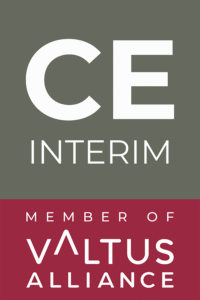Not enough time to read the full article? Listen to the summary in 2 minutes.
Leadership in the Central and Eastern European (CEE) region is not for the faint-hearted. As a German CEO, the leadership challenges of guiding a business through restructuring in this dynamic and unpredictable environment often feel like walking a tightrope.
On the one hand, you must bring the structured, efficient leadership approach that Germany is known for. On the other, you have to navigate a maze of local nuances—cultural, economic, and political—that don’t always align with traditional German management practices.
In this article, I’ll explore the unique leadership challenges that German CEOs face while restructuring operations in CEE, and more importantly, how to tackle them effectively.
1. Understanding the CEE Market: A Puzzle of Diversity
Let’s start with the basics: CEE is not one uniform region. It spans countries with vastly different political climates, economic conditions, and cultural identities. This isn’t the orderly business environment many German CEOs are accustomed to. So, how do you lead effectively in such a fragmented landscape?
1.1 Economic and Political Complexities
If you’re running operations in Poland, Hungary, and Romania, you already know that these countries play by different sets of rules. Poland’s economy might be in a growth phase, while Hungary struggles with political instability, and Romania faces frequent regulatory changes.
This means you can’t apply the same leadership style and restructuring strategies across the board.
A German CEO who expects a unified approach is bound to face resistance. Each CEE country requires a unique leadership style. It’s about being both strategic and flexible—seeing the big picture while understanding the local details.
1.2 The Workforce Puzzle
CEE also presents a wide array of workforce dynamics. In countries like the Czech Republic, you might find a highly skilled technical labor pool, while in others, like Bulgaria, sourcing top-tier talent can be a struggle.
The local workforce in some regions may be skeptical of foreign leadership, especially during restructuring. People may fear job cuts or changes to the work environment, which could spark resistance.
The challenge here is to combine German operational excellence with cultural sensitivity. Leadership means not just managing people but earning their trust and commitment, especially in uncertain times.
Companies like CE Interim, which specialize in navigating complex transformations in diverse regions like CEE, offer interim management services that help businesses maintain stability while managing operational changes.
With a deep understanding of local markets, they can provide the necessary expertise to make transitions smoother.
2. Leadership Challenges in CEE Restructuring: Navigating the Unfamiliar
Restructuring in CEE is like assembling a puzzle in the dark. German CEOs must confront challenges they’ve never faced before—ranging from cross-cultural tensions to managing a workforce going through organizational upheaval.
2.1 Overcoming Cultural and Communication Barriers
You’ve likely noticed that direct communication—a hallmark of German leadership—doesn’t always sit well in CEE. Countries in this region often value a more collaborative and flexible approach.
In fact, the very traits that make German leadership effective at home, such as strict organization and precision, can sometimes be perceived as too rigid in CEE.
Take Hungary, for example. If you present a new restructuring plan and expect immediate buy-in without open discussion, you might face resistance. The solution? Tailor your communication style.
Instead of telling, try engaging. Instead of commanding, try guiding. Show you’re not just a German CEO dropping in with solutions but someone who respects local input.
2.2 Decision-Making in Uncertain Times
German CEOs are used to making well-calculated, data-driven decisions. However, in CEE, unpredictability is the norm. Whether it’s sudden regulatory changes or political instability, waiting for the perfect information can cost you valuable time.
Here, agility is key. The German trait of meticulous planning must be balanced with a more dynamic decision-making approach. You’ll need to act on incomplete information and be comfortable with some level of risk.
It’s not about abandoning careful planning, but about making timely decisions when the situation demands it.
3. Restructuring in Action: Strategic Leadership for German CEOs
Restructuring in CEE is rarely just about cutting costs or streamlining processes. It’s about leading people through change—often when they’re at their most vulnerable.
3.1 Crisis Leadership: The Human Side of Restructuring
It’s easy to get lost in spreadsheets and operational metrics during restructuring. But at the end of the day, restructuring brings significant leadership challenges, particularly from a human perspective.
Layoffs, role changes, and uncertainty about the future can deeply affect your employees, and their morale plays a huge role in the success of your restructuring plan.
For German CEOs, this may require a shift in leadership style. German businesses are known for their focus on efficiency and precision, but in CEE, it’s equally important to show empathy.
Clear, transparent communication about the reasons behind restructuring, paired with a strong sense of support for your team, can make a world of difference.
For example, when leading a restructuring in Poland, one CEO shared the restructuring roadmap with all employees before any major changes occurred.
They organized workshops to retrain affected employees, helping them transition to new roles within the company. This not only softened the blow of job cuts but also maintained high employee engagement throughout the process.
3.2 Balancing Short-Term Fixes with Long-Term Vision
During restructuring, it’s tempting to focus solely on immediate results—cutting costs, reducing headcount, or shutting down underperforming operations. But if you’re thinking long-term (which you should be), you must ensure that these short-term fixes don’t undermine your company’s future in CEE.
A CEO who lays off workers today without a plan for talent development risks losing the skill base that the company will need when the market stabilizes. Instead, think of restructuring as a time to refocus and future-proof your operations.
The CEE region holds immense growth potential, and your leadership during restructuring will determine whether your company thrives or falters in the future.
4. Lessons Learned: Leadership Strategies for German CEOs
Through every restructuring comes a lesson. For German CEOs operating in CEE, there are some clear takeaways that can set the foundation for long-term success.
4.1 Flexibility is Non-Negotiable
CEE markets are constantly evolving. While German precision is a strength, you’ll need to let go of perfectionism in favor of adaptability. This could mean giving local managers more decision-making power or being ready to pivot your restructuring plans at a moment’s notice.
4.2 Leverage Local Expertise
No one knows the CEE market better than those who work in it. Leverage local managers to help bridge the gap between your strategic vision and the local business climate. Their insight into the workforce, local regulations, and customer behavior can help you avoid costly missteps.
CE Interim, with its cross-cultural executive interim management services, is adept at quickly deploying experienced leaders to manage critical functions during restructuring. Their on-the-ground expertise and adaptability help businesses stay agile during transformative times.
4.3 Embrace Cross-Cultural Competence
Leading across borders isn’t just about overcoming challenges—it’s about embracing differences. German CEOs who succeed in CEE do so because they understand that leadership isn’t just about bringing German efficiency to the table. It’s about combining that efficiency with cultural awareness, empathy, and a genuine willingness to adapt.
Conclusion: The Future of German Leadership in CEE
Leading in CEE isn’t easy, but for German CEOs willing to step outside their comfort zone, it can be incredibly rewarding. The region is full of opportunity, but realizing that potential requires a new approach to leadership—one that balances structure with flexibility, precision with empathy, and long-term vision with short-term action.
As German leaders continue to guide their companies through restructuring in CEE, those who address leadership challenges with cultural sensitivity, local empowerment, and flexibility will not only overcome today’s obstacles but also unlock future success in this evolving region.





